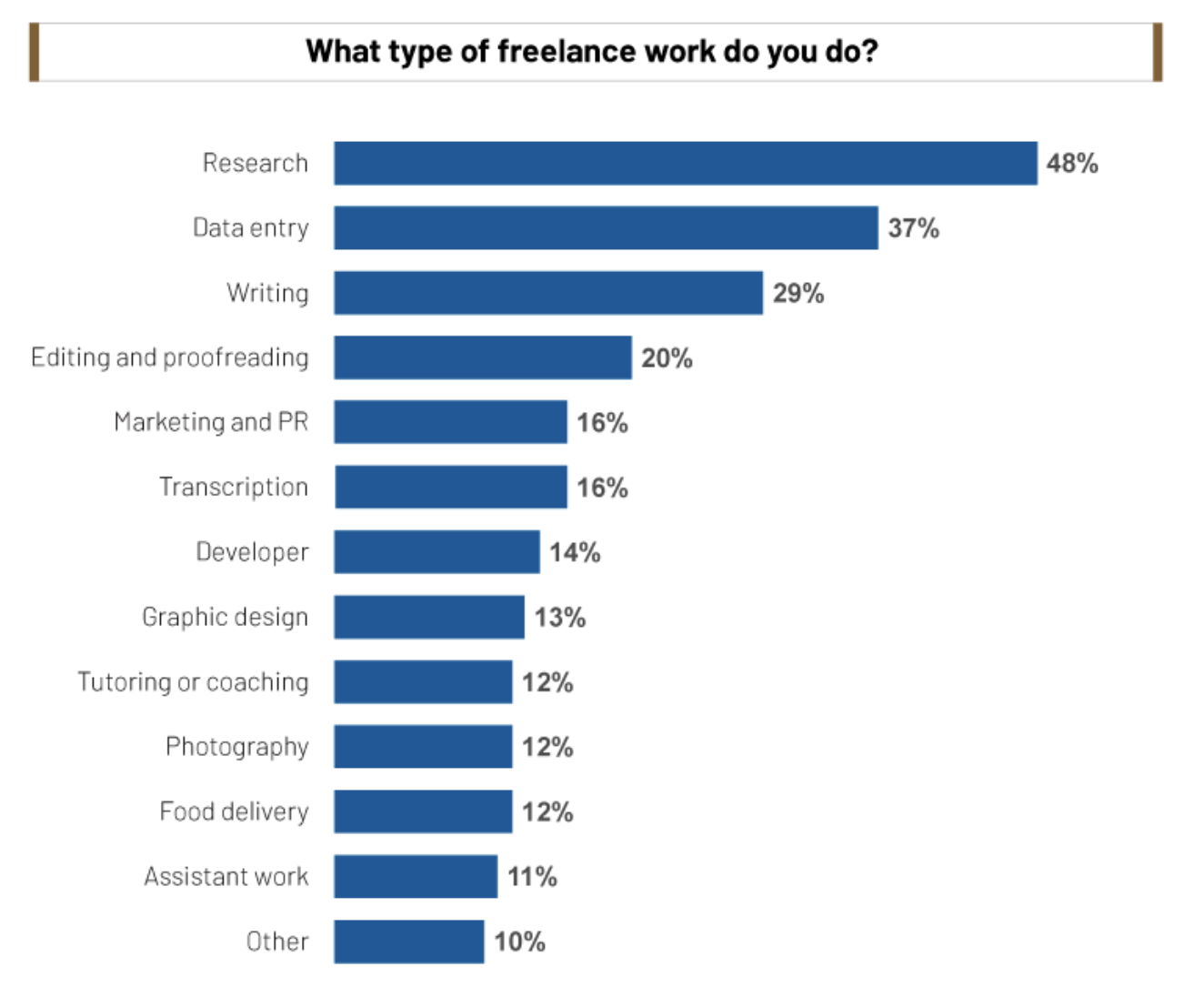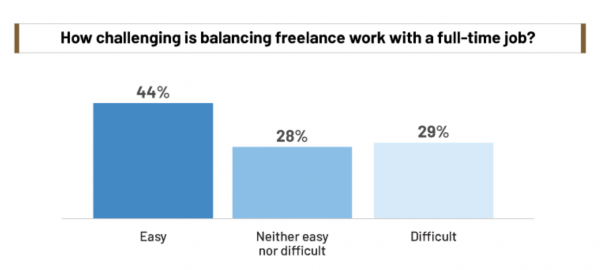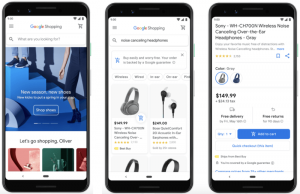More full-time employees are taking a second shift. But it’s not necessarily to care for family. It’s to moonlight as a freelancer. As the pandemic has more people considering freelancing and as big business commit to hiring freelancers, there’s a lot of opportunity on the table. What’s interesting, though, is the number of people who don’t want to leave their full-time employment.
A whopping 82% of people said they wanted to add freelancing on top of being a full-time employee, according to a study by Paychex. Not everyone took the leap, though. The study found that only 59% of people actually freelanced while also working full-time.
Analyzing the second shift: what kind of freelance work full-time employees do
As expected with the COVID-19 pandemic, the majority (62%) of freelancing is virtual. 20% is both in-person and virtual, while only 18% is in-person. When it comes to the types of work people take on, the work is overwhelmingly content-focused: research (48%), data entry (37%), writing (29%), and editing & proofreading (20%) make up the top four tasks. Other work includes visual design, development, or coaching.
 Source: Paychex
Source: Paychex
Not everyone who freelanced during the pandemic started freelancing because of it. According to the survey, only 22% of people started freelancing for the first time during the pandemic. However, of all people who freelanced during the pandemic, there’s a common thread: remote work. 69% of respondents said they could do their current full-time jobs from any location.
One potential issue, though, is whether employers know about an employee freelancing. 52% of people haven’t told their full-time employer about moonlighting as a freelancer, despite on average spending 15 hours per week doing freelance work. Further, 12% say they’ve been caught doing freelance work while on paid work time and 16% have missed a full-time work meeting because of freelance work.
More work, more enjoyment from freelancing
Thinking about why a full-time employee might risk their job for freelancing, the data shows it’s because they like it. More than half of people (51%) say they prefer either freelancing alone (24%) or both freelancing and their full-time job together (27%). This is consistent with a study showing that, on average, full-time freelancers like their work more than full-time employees do.
Further, there’s demand. More than half (54%) of respondents have seen increased demand for their services. When it comes to balancing work, that doesn’t seem to be a problem for most. 44% say it’s easy to balance work and freelancing while 28% say it’s not easy or difficult. Only 29% say it’s difficult to balance.
 Source: Paychex
Source: Paychex
With increasing demand and enjoyment, it’s no wonder that 59% of respondents said they’d like to continue freelancing for a few years (22%) or indefinitely (37%). Nearly half (49%) would also happily quit their jobs to freelance full-time if they could make more money doing it.
As freelancing continues to grow – both due to existing trends and the COVID-19 pandemic – there’s a lot of opportunity out there.
Business & Finance Articles on Business 2 Community
(27)
Report Post






